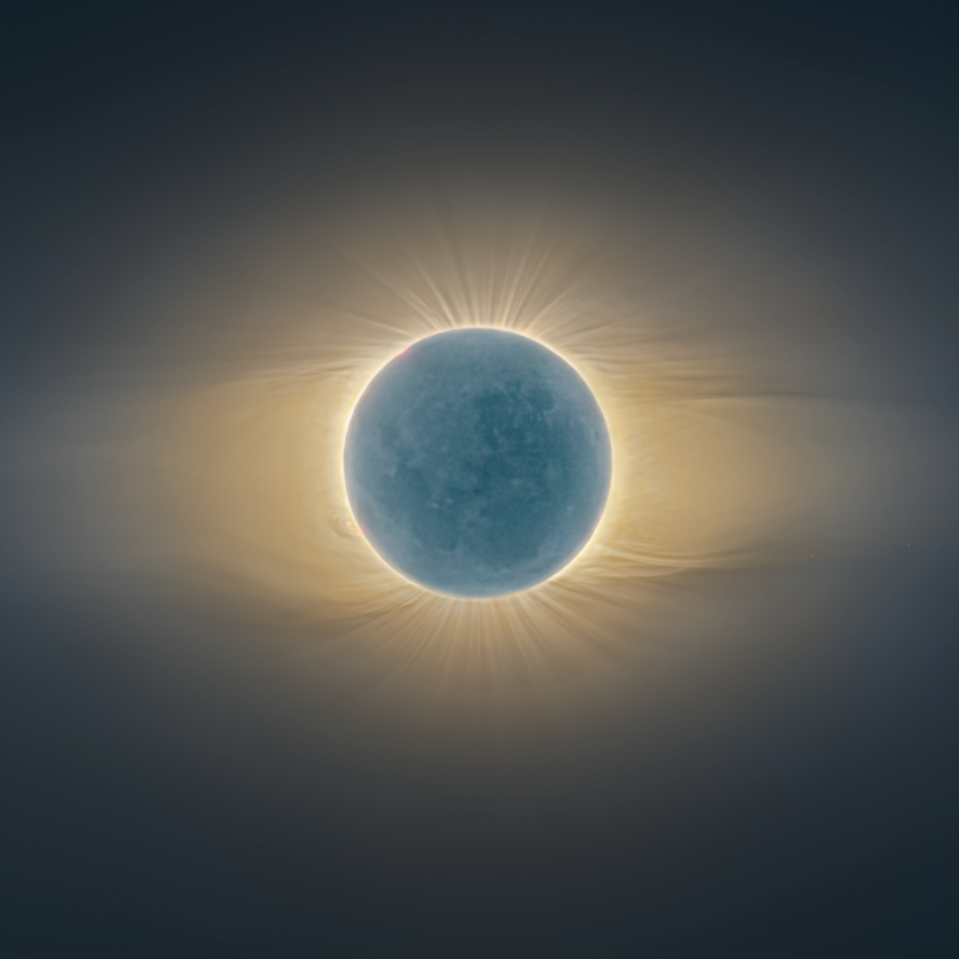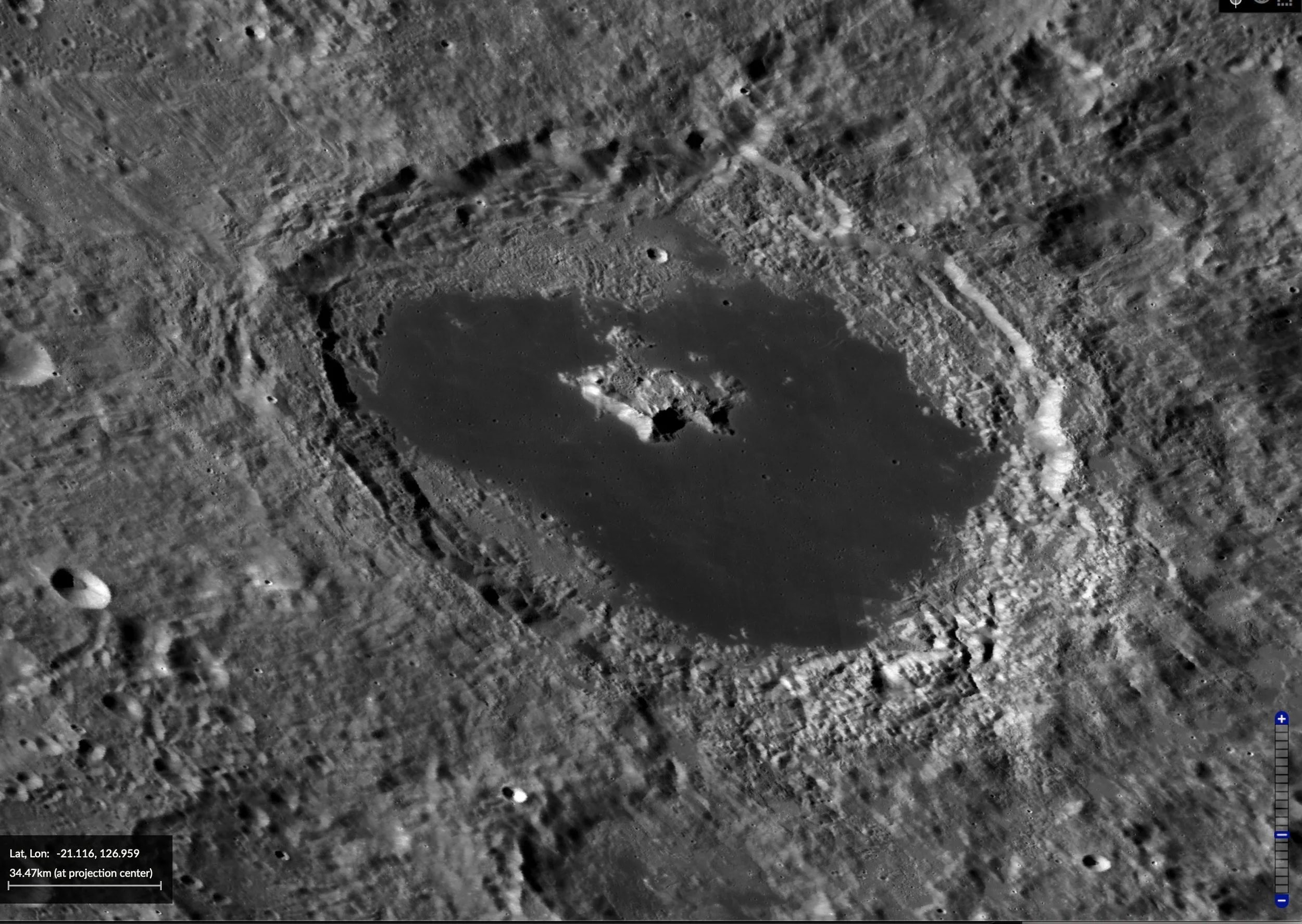Day 0
The only time a true New Moon can be seen is during a solar-eclipse. While the front of moon is “new” bathed in nothing but the cool blue light reflected off the full earth, the backside of the moon has its own glories.
Luna 3
The first photographs of the lunar far side were taken by the Soviet’s Luna 3 satellite. In an amazing feat of engineering Luna 3 contained a crude but effective onboard film processing unit.. While terrible quality, the image revealed for the first time the dramatic differences between the front and back sides. While front is noteworthy for its many large lava filled “seas,” the backside is almost entirely made of crat. Out of the few features visible, the two largest are the crater, to be named Tsiolkovsky who many consider the “Father of Spaceflight”, and the lava flooded basin named Sea of Moscow.
Below, the Luna 3 image is on the left of a modern image from the Lunar Reconnaissance Orbiter. The left third of the moon is the is visible to us as the eastern limb.
Tsiolkolvsky Crater
One of the most visible features on the back side of the moon is the massive Tsiolkovsky crater. With a diameter of 115 miles, and a central peak rising over 1.8 miles tall, it was named after Konstantin Tsiolkovsky (1857 - 1935), the great 19th century Russian scientists who is considered the “Grandfather of Space Travel".” (1)
Tsiolkolvsky was the first true pioneer in the field of Astronautics, delving into spaceflight from a serious scientific and engineering standpoint. Adding Herman Oberth of Germany and Robert Goddard of the United States three are collectively the true pioneers os space travel.
The central peak of Tsiolkovsky rises to nearly 2 miles. (1)
Sea of Moscow
The second feature to be named on the back side of the moon. (2)




